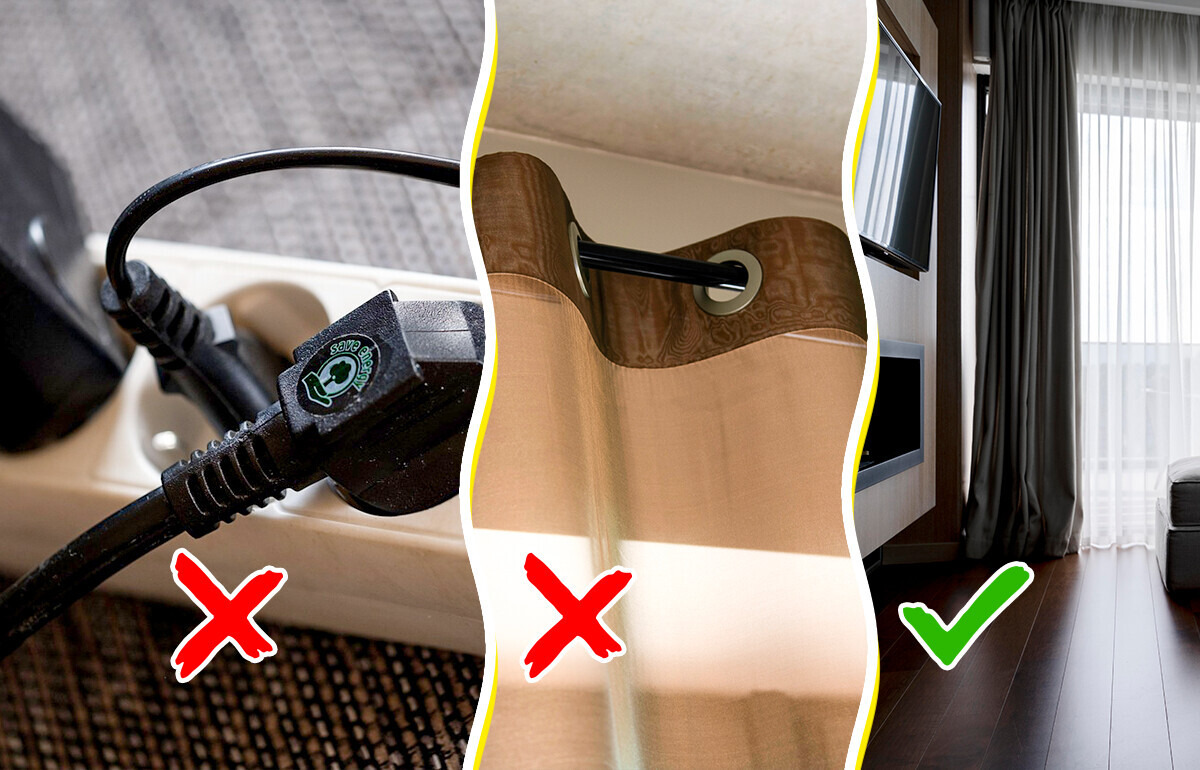11 Everyday Things We’ve Been Doing Wrong All Along


Renovation is no simple task. When the extensive foundational work is behind you, it may seem like there’s just a little left to do. However, to create a stylish and luxurious-looking interior, you need not only money but also attention to detail.
Often, even after an expensive renovation and purchasing quality furniture, something still feels off, and the setting appears incomplete. We turned to professional designers and architects to find out what small details can subtly undermine the interior and how to fix it.
This article is intended exclusively for entertainment purposes. We make no representations or warranties regarding the completeness, accuracy, reliability, or safety of the provided content. Any actions taken based on the information in this article are performed solely at the reader’s own risk. We are not liable for any losses, damages, or consequences arising from the use of this content. Readers are advised to act independently, take appropriate precautions, and seek professional advice when attempting to reproduce any part of this content.
The designer with more than 10 years of experience, Emily Henderson, author of a famous interior design blog, claims that the foundation of a harmonious and cohesive interior is a carefully thought-out color palette. She recommends using 3–5 shades to avoid visual clutter.
This perspective is shared by designer Reynard Lowell, who demonstrates in his projects that instead of one bright accent color, it’s better to use it in multiple shades. According to him, this approach adds layers to the space, making it more dynamic and visually expensive. These design principles are based on the theory of color perception and are successfully applied by leading studios worldwide.
The architect and designer Alexey Ivanov, co-head of the Geometrium studio, repeatedly demonstrates in his projects that the use of textures can give the interior a more expensive and well-thought-out look. This is achieved not only through the use of expensive materials, but also by applying decorative plaster or textured paint.
According to Ivanov, these solutions allow creating depth and tactile diversity, making the space more interesting and complex. He suggests choosing one or several walls in the interior to add texture to.
Properly chosen curtains unify the room. Designer Brianna Untener from Brianna Scott Interiors recommends paying it special attention because curtains transform the room and make it feel less empty. The width of the curtains should exceed the width of the window by 2 to 2.5 times to create beautiful folds. Curtains look better when they hang at least 4 to 5 inches above the window, depending on the distance to the ceiling.
Stylish curtains can enhance any interior, regardless of the style you have chosen. However, according to Anna Kroesser and Amelia Strat from Kroesser + Strat Interiors, there is one curtain style to avoid: “Window drapery with grommets make a home look less expensive and luxurious. This feels very college dorm-like and not elevated.” When choosing curtains, experts suggest focusing on models with hidden tabs or pinch pleats.
In a modern home filled with electronics, the organization of wires becomes key to creating a harmonious interior. Renowned interior designer Izabela Tokarski, founder of the design studio Kabela & Co., emphasizes that these details disrupt the visual harmony of the space, drawing attention to themselves.
To address this issue, experts recommend using special organizing systems, such as cable channels, wire boxes, or concealing panels. Hiding wires not only makes the interior cleaner and more refined, but also enhances safety, reducing the risk of tripping or damaging electronics. It’s a simple and effective solution that will keep your home well-thought-out and tidy.
A rug is a functional element of decor that can transform a room, adding coziness and warmth to it. Its significance in interior design is sometimes underestimated. A rug divides space, adds color and texture, and also serves as excellent sound insulation. It allows you to change the room energy easily without major investments.
So, what should you pay attention to first? Designer Naika Andre from NJA Interiors strongly advises choosing a rug of the right size: “Large rugs can provide a wonderful foundation for a room, while small rugs can create a sense of incompleteness.” Ideally, a rug should be large enough for the front legs of the furniture to rest on it. Designer Jill Romine adds that rugs that are too small can ruin the space, so she doesn’t skimp on rug size.
The Architect and designer Alexey Ivanov uses his projects to explain that the color of window frames can significantly influence the overall perception of an interior. In his opinion, standard white frames can sometimes appear less expensive than, for instance, frames in black or graphite colors. As the expert notes, these shades help to add depth and sophistication to a space.
If window replacement is not possible, he recommends using alternative solutions, such as lamination. Additionally, you can paint the frames with special plastic paint.
Designers note that bedding and bedspreads play a significant role in the bedroom’s interior. Ideally, they should match the chosen style. Experts recommend looking into stylish monochrome white and gray options made from natural fabric. This is a universally safe option because it looks great with a wide range of different styles and design solutions.
Additionally, the bedding should be proportionate to the bed. For example, if you place square pillows at the headboard and 2 rectangular ones in front of them, the bed will look more interesting. A bedspread looks harmonious when it beautifully drapes over the edges.
Designers note that the excessive use of shiny surfaces in interior design can visually cheapen the space, regardless of the actual cost of the materials. Experts believe this occurs because such surfaces can appear less natural compared to matte ones. Additionally, they tend to draw attention to themselves.
Experts recommend being cautious with gloss and considering more matte, subdued solutions, which will harmoniously blend with other elements of decor.
Items lying around create visual noise, which diminishes the overall interior design. Designers share possible solutions to this problem. For example, niches effectively hide clutter without taking up space.
However, visual noise can also be reduced using simpler yet equally practical methods. For instance, designer Reynard Lowell recommends choosing a decorative tray or basket for small items, or designating specific drawers for particular things.
Designers often prefer shower curtains over glass doors. However, despite their practicality and ease of use, shower curtains can make a bathroom look cheaper, especially if they are colorful and flashy.
Designers suggest hiding curtains behind special niches: this way, they don’t draw attention, making the interior appear neater and more upscale. As an alternative solution, one can consider solid-colored curtains in more subdued tones.
An unpleasant odor remaining after renovation or plumbing work can ruin the impression of even the most exquisite interior. Principles described on portals such as Azuna indicate that masking an odor is less effective than neutralizing it. According to hygiene and sanitation experts, to effectively eliminate an odor, it is necessary first to identify its source and address any malfunction.
Experts from the company SERVPRO note that for removing residual odors, a thorough wet cleaning using special cleaning agents is recommended. Once you have ensured the cleanliness and safety of the space, you can personalize it by selecting a suitable fragrance in the form of candles, diffusers, or sachets. A pleasant aroma will be the finishing touch.
Attention to detail is what sets a truly thought-out interior apart from just a collection of furniture. To give a home an expensive and well-maintained look, a large budget is not always necessary.
Check out these clever interior design tricks that will make your home unique.











